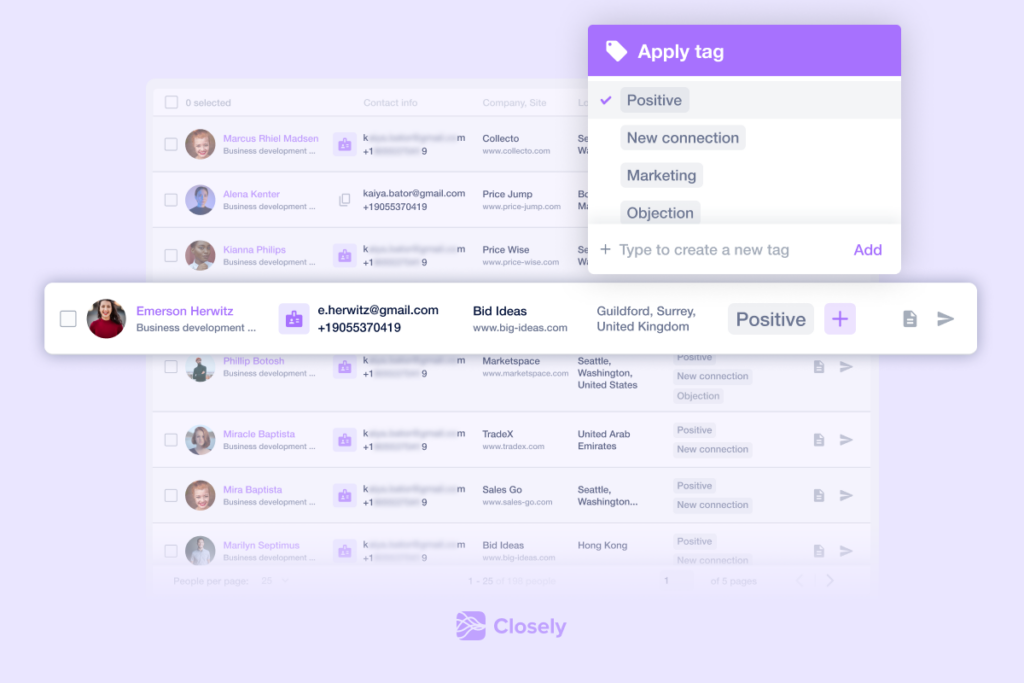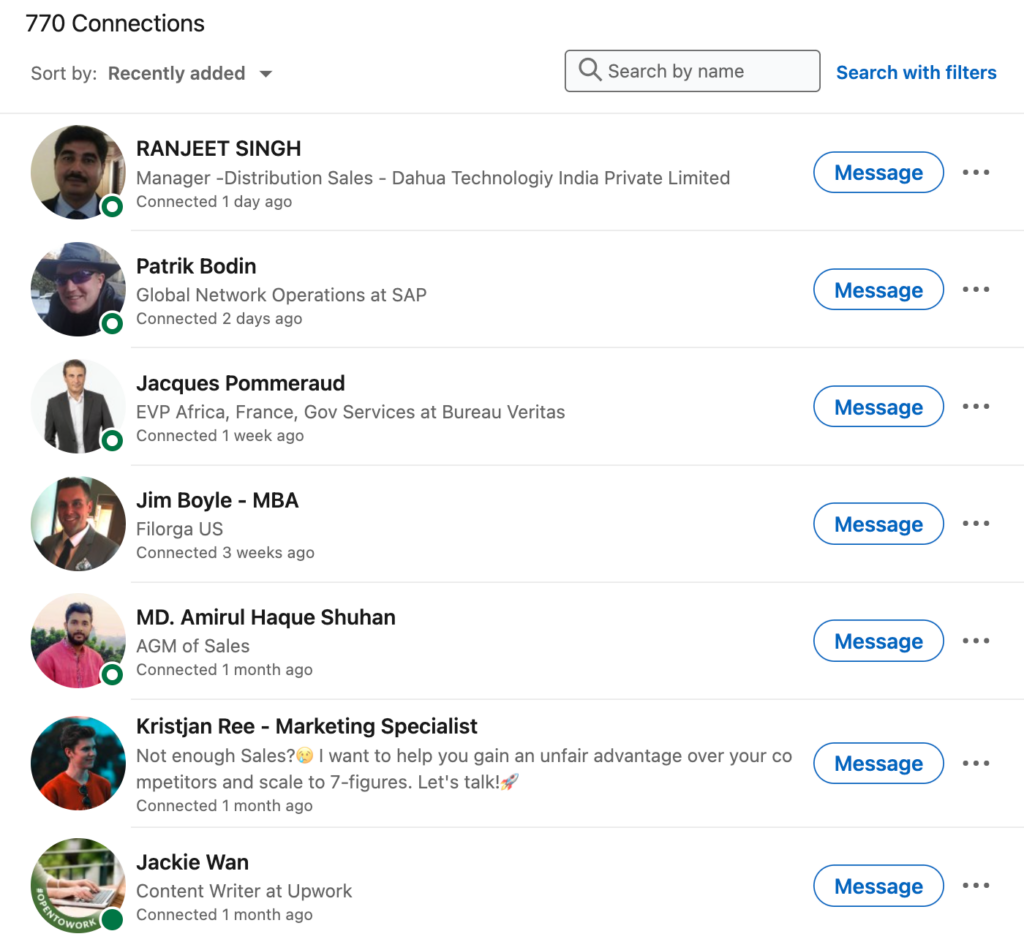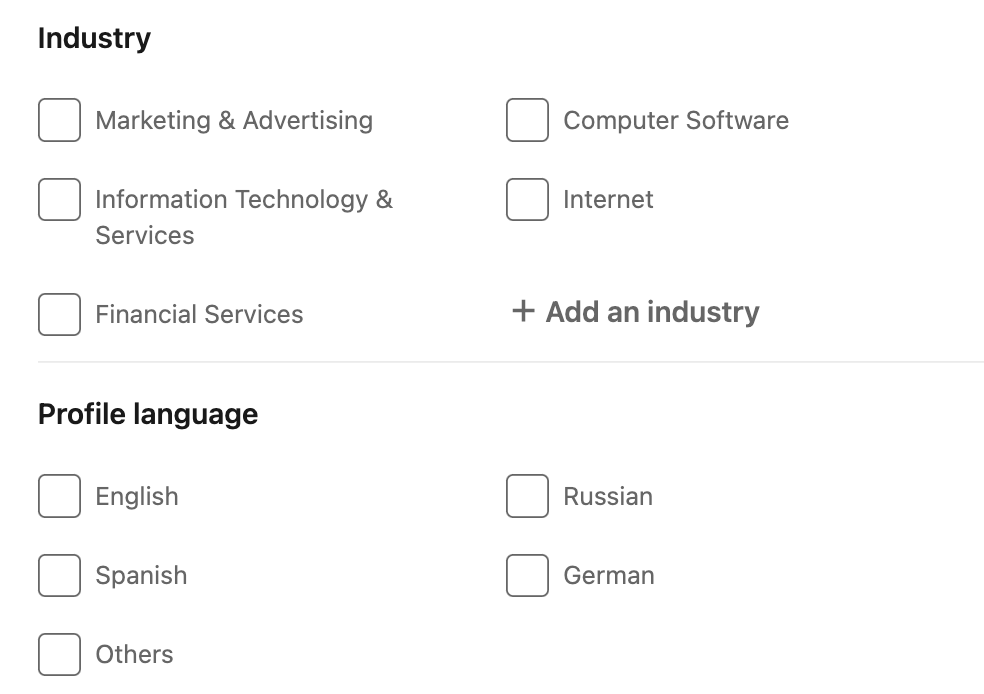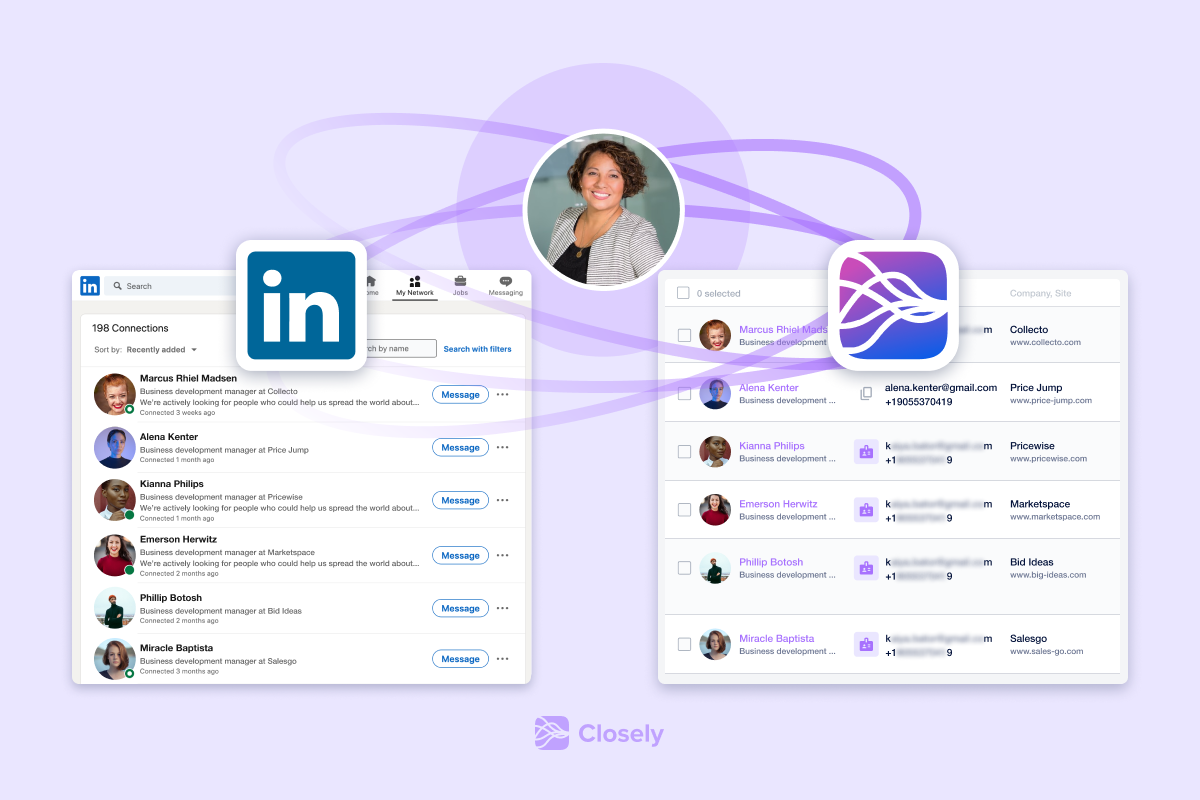Finding lots of new prospects and keeping your current customers engaged by updating them on your latest developments and news is made possible with your LinkedIn network.
You can message each contact individually, but when you need to share something to a group of people, things get tricky. There’s no way to implement your own criteria, so you’re left with the filters available on LinkedIn in order to search for the targeted prospects. This makes your workflow cumbersome: manually putting in the list of people into a CRM software or spreadsheet.
With Closely, you don’t have to worry about any of that. It finds prospects based on your criteria and assigns specific groups to them. Now you can easily contact any given group, whether on LinkedIn or via other platforms.
We’ll tell you how you can make the most out of LinkedIn account by leveraging Closely’s features for free!

So, our new feature is called Network Management. What is this?
Network Management lets you create lead segments, based on different criteria and turn your regular LinkedIn network into CRM.
No more piles of files, switching back and forth, pricey solutions to integrate CRM.
Why is this important to have and use?
First thing first: your existing LinkedIn contacts can become your customers in a few clicks. The only thing that’s required is to reach right groups of people at the right moment.

On LinkedIn, it’s impossible to do this because there is no option of filtering your contacts based on your criteria. In sales, segmenting people based on your own criteria matters a lot!
Of course, if you just do everything on LinkedIn, your workflow is not very organized. So, salespeople wonder if there is a way to connect your LinkedIn network to CRM.
Further Reading: How to Send Bulk Messages on LinkedIn
Yes, you can do that, but solutions for this are usually pricey. We decided to make it accessible to everyone. Now you can collect different profiles and assign them a label, for example, “name of the conference”. Adding notes helps to keep all important information organized and accessible.
How does Network Management help?
- Audience segmentation based on your own criteria adds to more effective communication strategies.
- You spare much of your time and become more organized and productive.
- You can keep all information organised in one place — it simplifies the workflow substantially.
Let’s jump into the cases right away.

Address narrower groups of contacts
You know that LinkedIn doesn’t allow you to filter contacts based on your custom filters. Salespeople are left with basic filters, like industry, location or job title.

Of course, if you need to text one particular person, you’ll just dig your memory, recall what company they work in, and find a particular person among all your contacts in your network.
But what if you need to write to a particular group of people? Imagine that 5 potential buyers told you earlier that your product lacks some important for them feature. And you’ve just added that very feature — time to inform them.
Having CRM integrated into your LinkedIn network lets you easily access that very group of people by simply applying the “wanted this feature” filter that you created earlier.
To create a filter, just tick all the contacts you need and assign custom filter. Searching in Closely allows you to use tags as filter criteria. This feature is very effective in segmenting your audience.
Using Network Management, you can easily generate new leads out of your existing network.
Case: Put together decision makers
There are countless ways how you can “play” with this. Alex is sharing his case.
“Single out people who make decisions and those who are just fans of your product — within one company. Create targeted messages for each of these groups. Decision makers need to be pushed toward a decision. Fans need to be persuaded to recommend decision makers buy the product. Using Closely, you can easily access each of these groups in a few clicks and write them a highly targeted message”.

Case: Gather event attendees
Grouping webinar attendees together helps you create more personalized campaigns in the future.
It doesn’t cost you anything to tick everyone who was present during your webinar and assign a tag to them.
Further, just experiment with reaching out to these groups of people — you won’t need to think up an ice-breaker. Make it like this: “Hey {first_name}! You attended our webinar on Wednesday. Did you like it? We thought you might be interested in reading or latest guide [PDF] — this is our research on [topic].…”
Case: Segment by campaigns
It’s also useful to use campaign names in your tags. So you can know how to start your new conversation.
Other ideas for segmentation
You can come up with new ideas each time. But here is something for a good start.
- Segment basing on the product needs of your leads: need for two-factor authentication, need for integration with HubSpot , etc.
- According to the stage of the sales funnel they’re at: prospects, hot leads, MQLs, SQLs, PQLs, existing customers, satisfied customers, etc.
- Use event names where you met your potential customers, for example, a trade show
- Use the nature of their response, for example, “positive”, “neutral”, or “negative” for your segmentation
Build warmer relationships
Network management lets you:
- Come up with more effective and creative strategies
- Create targeted messages for groups of people
- Build long-lasting relationships
- Keep your contacts in order
Adding notes to your contacts also helps a lot to organize your workflow and sell efficiently. Note personal information about prospects to create a bond more quickly and warmly if you contact them again a few months later.
Try it right away! 😉
